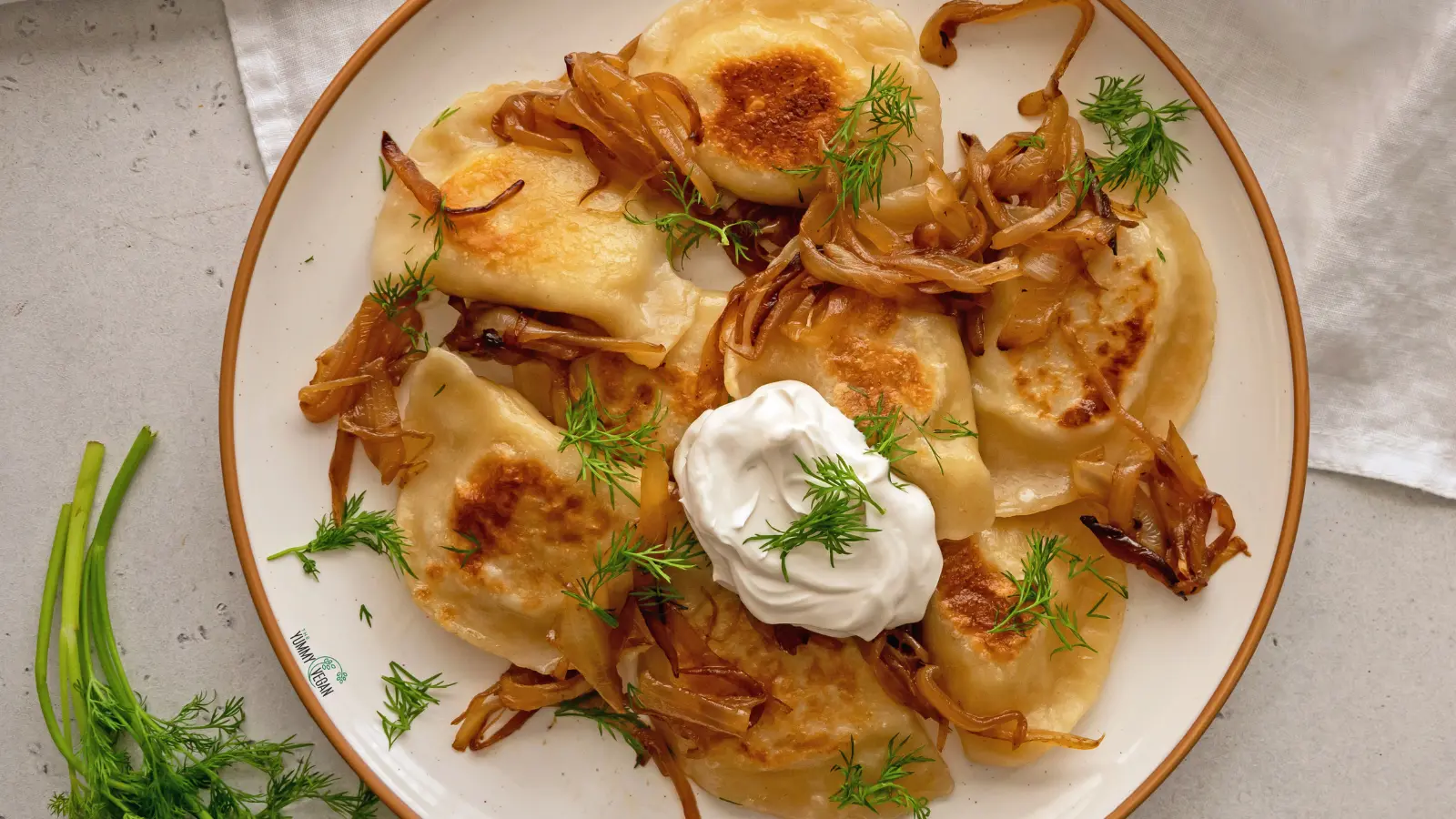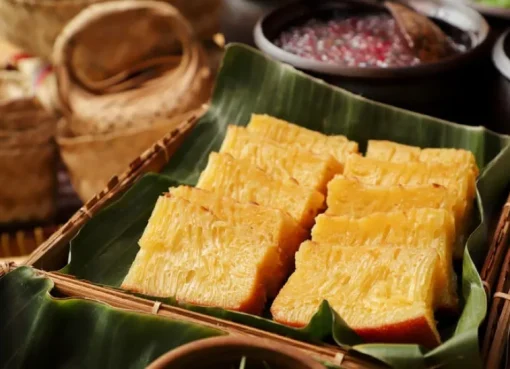Pierogi Perfection: Indulge in the Ultimate Comfort Food from Eastern Europe

Prepare your taste buds, for the ultimate comfort food of Eastern Europe is coming your way – pierogis! Originating from Polish, Ukrainian, and Russian cuisine, this delightful dumpling has become a globally recognized dish due to its delicious taste and infinite variety of fillings. Be it boiled, fried, or baked, you can stuff a pierogi whichever way you like, either with potatoes and cheese or meat and herbs, maybe even pineapples and chocolate – the choice is yours!
The dough-making traditions and filling recipes differ from one region to another, and in this article, we will guide you through the art of making pierogis, from the classical dough to the most atypical filling. Layers of wisdom and innovative cooking ideas will redefine the traditional recipe, thus offering you a fresh look at this authentic dish. Underneath the delicious impressions, there is not only the taste you won’t forget but also a piece of history and culture spanning centuries back that make pierogis known to everyone in the world.
Aprons and sleeves up – we embark on a voyage to explore the poetic culinary universe of pierogi perfection. When you reach the end of this article, you will either confirm your skills in the field of pierogi-making or become a fan of this wonderful dish, regardless of your acquaintance with it before.

History of Pierogi: Origins and Evolution of This Eastern European Dish
Pierogi have been around for centuries, woven into Eastern European history and culture. These delicious dumplings have their origin in either Russia or Poland and are considered a home away from home by those with Eastern European roots. Their journey to cultural icon status has been tumultuous and diverse, ever changing to meet the times, yet always the same in their comforting and familiar taste.
In the beginning, pierogi were a simple mix of flour and water filled with leftovers such as meats, vegetables, and later potatoes. This dish crossed borders, and with each new country, pierogi adapted to its unique ingredients, fillings, and even names. The simplicity and diversity of the dish are what makes pierogi such a delicious treat that can be adapted and changed a thousand times while remaining all too familiar.
In ancient Poland and Russia, pierogi was an expensive dish only kings could afford. However, with the changing political climate, food distribution, and availability of ingredients, pierogi became the favorite dish of the lower class, always filling and delicious. Today, pierogi are celebrated across the world in many festivals and restaurants, honoring their simple yet noble origins and rich cultural heritage.
Popular Variations of Pierogi: Classic Fillings and Regional Specialties
Pierogi come in an astonishing variety, each region boasting its own signature fillings and preparation methods. The classic potato and cheese pierogi, known as “pierogi ruskie” in Poland, is perhaps the most widely recognized and loved. This comforting combination, seasoned with salt, pepper, and sometimes onions, encapsulates the essence of traditional pierogi.
Beyond the classic fillings, regional specialties offer a glimpse into the local flavors and culinary traditions. In Ukraine, for example, pierogi are often filled with a mixture of cottage cheese, potatoes, and dill, reflecting the country’s love for fresh herbs and dairy products. Meanwhile, in Slovakia, you might find pierogi stuffed with bryndza, a tangy sheep’s milk cheese, showcasing the region’s pastoral heritage.
Sweet variations of pierogi are just as popular, filled with fruits like cherries, strawberries, and apples. These dessert pierogi are typically served with a dusting of sugar or a dollop of sour cream, blending the lines between meal and treat. Whether savory or sweet, each variation of pierogi is a celebration of the local ingredients and flavors that make Eastern European cuisine so diverse and delicious.
Techniques for Making Homemade Pierogi: Step-by-Step Guide
Making homemade pierogi allows you to become more creative with fillings and gather more experience preparing dough. The first step is to mix flour, water, eggs, and a small amount of salt to make the pierogi dough. A mixture is done when it is smooth and moderately coherent; thus, it should not get sticky.
When the dough is ready, it should be rolled out on a surface sprinkled with flour to make sure that it is thin but tough enough to keep the filling inside. Then, circles should be formed in the dough with a sheet of dough. After that, fill the center with a mixture and mix the two ends together with fingers or a fork to case the filling. There are two principal ways to cook pierogi, in boiling water, and in butter.
Boiled pierogi remain fragile while getting baked, whereas the outside becomes a little crispy, providing an excellent texture distinction. Whether frying or boiling, the result is always a product of hard, challenging work that pays off.

Tips for Perfecting Your Pierogi: Common Mistakes to Avoid
While making pierogi is a relatively straightforward process, a few common pitfalls can affect the final result. One of the most frequent mistakes is overworking the dough, which can make it tough and chewy rather than tender and delicate. Be gentle when mixing and kneading, and allow the dough to rest before rolling it out.
Another tip is to avoid overfilling the pierogi. While it’s tempting to pack them with as much filling as possible, too much can cause the pierogi to burst open during cooking, leading to a messy pot and lost flavor. A teaspoon or two of filling is usually sufficient, depending on the size of your dough circles.
Lastly, ensure the edges of your pierogi are well-sealed to prevent the filling from leaking out. A tight seal is crucial, especially if you plan to boil them. Moistening the edges of the dough with a bit of water can help create a stronger bond that holds up during cooking.
Serving and Enjoying Pierogi: Traditional Toppings and Accompaniments
Pierogi can be enjoyed in many ways, with a variety of toppings and accompaniments that enhance their flavor. A classic serving suggestion is to top boiled pierogi with melted butter, a sprinkle of salt, and a side of sour cream. This simple yet delicious combination allows the flavors of the filling to shine through.
For those who prefer a bit of crunch, fried onions or crispy bacon bits make a flavorful topping that adds texture and depth to the dish. Fresh herbs, such as dill or chives, can also be sprinkled on top for a burst of color and freshness.
Pierogi are versatile enough to serve as an appetizer, main dish, or dessert, depending on the filling. They can be paired with a simple salad for a light meal or served alongside meat dishes for a more substantial feast. Sweet pierogi, filled with fruits and served with a dollop of cream or a drizzle of honey, make for a delightful dessert that’s sure to please.
Where to Find the Best Pierogi: Famous Restaurants and Festivals
For those looking to sample the best pierogi without making them from scratch, there are plenty of restaurants and festivals that celebrate this beloved dish. In cities with a strong Eastern European presence, such as Chicago, New York, and Toronto, you’ll find authentic pierogi served in traditional restaurants and modern eateries alike.
Festivals dedicated to pierogi are a fantastic way to experience the variety and creativity that go into making these dumplings. The Pierogi Festival in Whiting, Indiana, is one of the largest in the United States, attracting thousands of visitors each year with its wide range of pierogi, live music, and cultural performances.
In Poland, the Pierogi Festival in Krakow is an annual event that showcases the rich history and diversity of jp slot. Here, you can taste everything from classic recipes passed down through generations to innovative creations that push the boundaries of traditional pierogi.

Vegan and Gluten-Free Pierogi Options: Catering to Dietary Restrictions
Pierogi are a versatile dish that can easily be adapted to suit various dietary needs, including vegan and gluten-free diets. For vegan pierogi, traditional fillings can be modified by using plant-based cheeses and meats, or by focusing on naturally vegan fillings like sautéed mushrooms, onions, and potatoes.
Gluten-free pierogi dough can be made by substituting regular flour with gluten-free flour blends designed for baking. These blends often contain a mix of rice flour, tapioca flour, and xanthan gum, which help mimic the texture of traditional pierogi dough. While the dough may be a bit more delicate to work with, the result is a delicious, gluten-free alternative that everyone can enjoy.
With a little creativity and experimentation, it’s possible to make pierogi that are inclusive of all dietary preferences. These adaptations not only ensure that everyone can partake in the joy of eating pierogi but also introduce new flavors and textures to this classic dish.
Pierogi in Popular Culture: References in Movies, Books, and Art
Pierogi have made their mark not only in the culinary world but also in popular culture, appearing in movies, books, and artworks as symbols of Eastern European identity and comfort food. In film, pierogi are often depicted in scenes of family gatherings and celebrations, highlighting their role in bringing people together.
Literature, too, has found inspiration in pierogi, with authors weaving them into narratives that explore themes of heritage, memory, and the simple pleasures of cooking and eating. In art, pierogi have been portrayed in various forms, from still-life paintings that celebrate their rustic beauty to modern installations that interpret their cultural significance.
These cultural references underscore the deep connection many people feel to pierogi, not just as a food item but as a representation of home, tradition, and the universal human experience of sharing a meal with loved ones.
Conclusion: Celebrating the Deliciousness and Versatility of Pierogi
Pierogi are much more than just a delicious dish; they are a celebration of Eastern European culture, a testament to the power of simple ingredients, and a reminder of the joys of home-cooked meals. Whether you prefer your pierogi stuffed with savory fillings or sweet delights, there’s no denying the comfort and satisfaction that comes from indulging in these little dumplings.
By exploring the history, variations, and cultural significance of pierogi, we gain a deeper appreciation for this humble dish and its ability to bring people together. So next time you enjoy a plate of pierogi, take a moment to savor not only their flavors but also the rich traditions and stories they carry with them.
Pierogi perfection is not just about achieving the right texture or nailing the perfect filling—it’s about celebrating the deliciousness and versatility of one of Eastern Europe’s most beloved foods. So here’s to pierogi, in all their shapes, sizes, and flavors—may they continue to comfort and delight us for generations to come.



